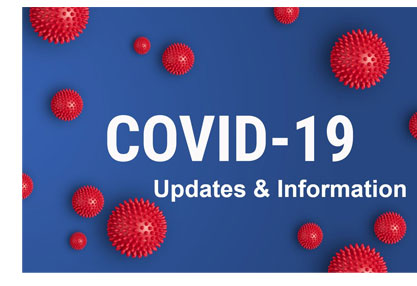THIS ISSUE'S HEADLINES
What's in a Name?
The Corporate Transparency Act:
New Federal Reporting Requirements For Certain Business Entities
The Importance of Covenants in a Business Transaction
Stay Informed — PLDO COVID-19 Resource Library

WHAT'S IN A NAME?
 Nonprofit organizations sometimes find that changing missions or a desire for a more updated image fosters consideration of a change in the entity’s name. There are two options if you wish to alter your nonprofit’s name. The nonprofit can legally change its name by amending its founding document (the articles of incorporation). Alternatively, the organization can use a “DBA.” DBA stands for “doing business as,” and it is often referred to as a “fictitious” or “assumed” name. Nonprofit organizations sometimes find that changing missions or a desire for a more updated image fosters consideration of a change in the entity’s name. There are two options if you wish to alter your nonprofit’s name. The nonprofit can legally change its name by amending its founding document (the articles of incorporation). Alternatively, the organization can use a “DBA.” DBA stands for “doing business as,” and it is often referred to as a “fictitious” or “assumed” name.
A DBA can be useful in allowing an organization to publicly operate under a different name, while maintaining the legally registered name of the organization. A DBA should not alter the organization’s legal standing or tax-exempt status if implemented and used correctly. For example, if the organization is a tax-exempt nonprofit, it still must meet the strict requirements set by the federal government in order to maintain tax-exempt status. The fictitious name can be viewed as an extension of the organization—a DBA does not create a separate legal entity, and it should not operate for a different purpose than the original, tax-exempt nonprofit.
There are several reasons why a nonprofit organization may wish to publicly use another name while maintaining the original legal name. And, there are problems that may arise if an organization chooses to go in that direction. PLDO Associate Randelle L. Boots describes the advantages and challenges in her advisory on Considerations When Choosing To Use a DBA, and offers insight into the pros and cons for donor relations, branding and tax purposes. To access the advisory, please click here. For assistance and further information, please contact Attorney Boots at 401-824-5100 or email rboots@pldolaw.com.
[back to top]

THE CORPORATE TRANSPARENCY ACT:
NEW FEDERAL REPORTING REQUIREMENTS FOR CERTAIN BUSINESS ENTITIES
 Under the laws of most states, the formation of a new business entity requires the filing of certain paperwork with the secretary of state or other specified state filing office. In most cases, the information required includes the names and addresses of the board of directors, managers, etc., as well as the executive officers of the new entity. Furthermore, the information must be updated regularly in an annual report filed by the company. This information is a matter of public record and is accessible by anyone dealing with or interested in the company. However, the identity of the owners of these companies (the stockholders, LLC members, etc.) is not required to be included in either the formation papers or the annual reports filed once the company is in legal existence. Therefore, the owners are not a matter of public record. Under the laws of most states, the formation of a new business entity requires the filing of certain paperwork with the secretary of state or other specified state filing office. In most cases, the information required includes the names and addresses of the board of directors, managers, etc., as well as the executive officers of the new entity. Furthermore, the information must be updated regularly in an annual report filed by the company. This information is a matter of public record and is accessible by anyone dealing with or interested in the company. However, the identity of the owners of these companies (the stockholders, LLC members, etc.) is not required to be included in either the formation papers or the annual reports filed once the company is in legal existence. Therefore, the owners are not a matter of public record.
In order to help reduce certain criminal activity, including money laundering, organized crime and the financing of terrorism, and to discourage the use of so-called “shell companies,” the Corporate Transparency Act (the “CTA”) was passed by Congress in early 2021 and becomes effective upon the issuance of final Treasury Regulations not later than January 1, 2022. In general terms, the CTA requires a wide range of business entities to report personal information regarding the individuals who own, control or form covered entities to the Financial Crimes Enforcement Network of the U.S. Department of Treasury (“FINCEN”), which is required to maintain a data base of all information provided.
With the pending deadline and to assist businesses in decision-making, PLDO Partner William F. Miller has provided an advisory that includes details of reporting requirements, penalties for failure to comply, and other important information and considerations to be aware of. Please click the link to read The Corporate Transparency Act: New Federal Reporting Requirements For Certain Business Entities. If you have questions pertaining to the CTA or any other business matters, please contact PLDO Partner William F. Miller at 508-420-7159 or email wmiller@pldolaw.com.
[back to top]

THE IMPORTANCE OF COVENANTS IN A BUSINESS TRANSACTION
 In a business transaction in which either stock or assets are being transferred, the parties to the transaction rely upon representations, warranties and covenants to protect their interest, whether it is the buyer or seller. Representations and warranties essentially address an information gap between the time the purchase and sale agreement is executed and when a closing takes place. Covenants also assist in addressing the information gap once the transactional documents have been executed to prevent one side or the other from acting in a way that might devalue the assets or stock being purchased. Covenants address this issue by defining the scope of what is actually being agreed upon and defining the conduct expected prior to the closing whether it is affirmatively or negatively. The primary purpose of the covenant is to provide the parameters of conduct that will assure that the parties receive the full benefit of the transaction. In a business transaction in which either stock or assets are being transferred, the parties to the transaction rely upon representations, warranties and covenants to protect their interest, whether it is the buyer or seller. Representations and warranties essentially address an information gap between the time the purchase and sale agreement is executed and when a closing takes place. Covenants also assist in addressing the information gap once the transactional documents have been executed to prevent one side or the other from acting in a way that might devalue the assets or stock being purchased. Covenants address this issue by defining the scope of what is actually being agreed upon and defining the conduct expected prior to the closing whether it is affirmatively or negatively. The primary purpose of the covenant is to provide the parameters of conduct that will assure that the parties receive the full benefit of the transaction.
How Covenants Serve to Protect Each Party’s Interests
In many business transactions, the purchase agreement should include terms that limit the seller’s ability for a reasonable period of time to compete with the business sold, which would be included in a covenant not to compete. This type of covenant provides protection to the buyer to receive the benefit deserved that would be reflected in the purchase price for the business or assets. It essentially serves to limit the activity of the seller such that the buyer is receiving the benefit of the bargain and in the event of a breach, the buyer would have a remedy in damages or through injunctive relief. The scope of the covenant and amount of damages resulting from a breach would be negotiated during the process of finalizing the transactional documents.
In order for a covenant to be effective, there must be a way for the beneficiary of the covenant to monitor compliance. For example, in the case of an employment agreement, periodic performance reviews would serve this purpose. If a covenant exists not to compete or solicit the seller’s customers post-closing, the buyer would have the right to pursue damages and/or obtain an injunction against the seller for breaching the covenant.
Another example of a covenant in the sale of a business relates to the operation of the business by the seller after executing the purchase and sale agreement. This type of covenant stating that the seller should operate the business in the ordinary course and in a manner consistent with industry practice and standards protects the buyer between the time the purchase agreement is executed and when the closing takes place. Basically, the seller is obligated to operate the business in a manner consistent with past practice prior to executing the purchase agreement.
Finally, to protect the buyer in a business transaction, a covenant may provide that the buyer has full access to books and records during the due diligence process, which would include a physical inspection of assets prior to the closing. In the event of a material breach, the buyer would have the right to withdraw from the transaction or negotiate an adjustment to the purchase price.
Covenants exist to provide parameters for each party to protect and ensure that each party receives the full benefit of the transaction. Both the buyers and sellers in a business transaction, along with their attorneys, must exercise caution in finalizing the covenants that will be included in the purchase agreement because the failure to be diligent may result in significant costs and damages to either side of the deal.
If you have questions regarding covenants or any other business matter, please contact PLDO Managing Principal Gary Pannone at 401-824-5100 or email gpannone@pldolaw.com. To download a PDF version of this information, please click here.
[back to top]

 STAY INFORMED – PLDO COVID-19 RESOURCE LIBRARY STAY INFORMED – PLDO COVID-19 RESOURCE LIBRARY
PLDO’s team of attorneys continue to add updates and advisories regarding the pandemic and its impact on families, businesses and organizations. To access our COVID-19 Resource Library, click here.
[back to top]
|




 Nonprofit organizations sometimes find that changing missions or a desire for a more updated image fosters consideration of a change in the entity’s name. There are two options if you wish to alter your nonprofit’s name. The nonprofit can legally change its name by amending its founding document (the articles of incorporation). Alternatively, the organization can use a “DBA.” DBA stands for “doing business as,” and it is often referred to as a “fictitious” or “assumed” name.
Nonprofit organizations sometimes find that changing missions or a desire for a more updated image fosters consideration of a change in the entity’s name. There are two options if you wish to alter your nonprofit’s name. The nonprofit can legally change its name by amending its founding document (the articles of incorporation). Alternatively, the organization can use a “DBA.” DBA stands for “doing business as,” and it is often referred to as a “fictitious” or “assumed” name.  Under the laws of most states, the formation of a new business entity requires the filing of certain paperwork with the secretary of state or other specified state filing office. In most cases, the information required includes the names and addresses of the board of directors, managers, etc., as well as the executive officers of the new entity. Furthermore, the information must be updated regularly in an annual report filed by the company. This information is a matter of public record and is accessible by anyone dealing with or interested in the company. However, the identity of the owners of these companies (the stockholders, LLC members, etc.) is not required to be included in either the formation papers or the annual reports filed once the company is in legal existence. Therefore, the owners are not a matter of public record.
Under the laws of most states, the formation of a new business entity requires the filing of certain paperwork with the secretary of state or other specified state filing office. In most cases, the information required includes the names and addresses of the board of directors, managers, etc., as well as the executive officers of the new entity. Furthermore, the information must be updated regularly in an annual report filed by the company. This information is a matter of public record and is accessible by anyone dealing with or interested in the company. However, the identity of the owners of these companies (the stockholders, LLC members, etc.) is not required to be included in either the formation papers or the annual reports filed once the company is in legal existence. Therefore, the owners are not a matter of public record.  In a business transaction in which either stock or assets are being transferred, the parties to the transaction rely upon representations, warranties and covenants to protect their interest, whether it is the buyer or seller. Representations and warranties essentially address an information gap between the time the purchase and sale agreement is executed and when a closing takes place. Covenants also assist in addressing the information gap once the transactional documents have been executed to prevent one side or the other from acting in a way that might devalue the assets or stock being purchased. Covenants address this issue by defining the scope of what is actually being agreed upon and defining the conduct expected prior to the closing whether it is affirmatively or negatively. The primary purpose of the covenant is to provide the parameters of conduct that will assure that the parties receive the full benefit of the transaction.
In a business transaction in which either stock or assets are being transferred, the parties to the transaction rely upon representations, warranties and covenants to protect their interest, whether it is the buyer or seller. Representations and warranties essentially address an information gap between the time the purchase and sale agreement is executed and when a closing takes place. Covenants also assist in addressing the information gap once the transactional documents have been executed to prevent one side or the other from acting in a way that might devalue the assets or stock being purchased. Covenants address this issue by defining the scope of what is actually being agreed upon and defining the conduct expected prior to the closing whether it is affirmatively or negatively. The primary purpose of the covenant is to provide the parameters of conduct that will assure that the parties receive the full benefit of the transaction.